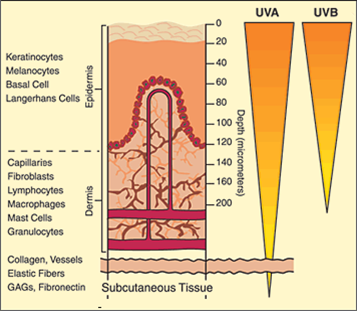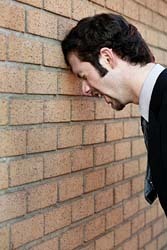Just when you think you have everything in your diet dialed in, something new comes along and upsets your carefully constructed nutrition knowledge applecart. This particular compound has been getting nutritionists a little giddy with excitement for a while, and now it is receiving more and more media exposure causing everyday folk scratch their heads at the new wonder boy. It’s hard not to get swept away in general enthusiasm when our popular morning TV show touts Resistant Starch (RS) as a “sneaky fat fighter”.
Remember when things were simple and we were told to just eat more fibre? Well, that is so 1990s. CSIRO in Australia note that while Aussies eat more fibre than many other Western countries we still have the highest incidence of bowel cancer in the world. They call it ‘the Australian paradox’ (what number paradox is it now? I lose track). So looks like adding more fibre in form of All-Bran and bran muffins into our diet has done bugger all to keep those pesky intestinal cells from going bananas and turning into some evil little suckers. All hail resistant starch.
However, as most of you know, I am naturally a fairly skeptical person when it comes to dietary ‘miracles’, especially when the recommendations to increase RS in our diet from the above mentioned morning program look like this:
- Eat more canned or soaked legumes such as kidney beans, chickpeas and butter beans.
- Include more intact wholegrains, seeds and cereals, in your diet e.g. oats, barley corn and linseeds.
- Eat fruit such as bananas before it’s ripe.
- Eat salads that have been cooked and cooled, such as potato salad, rice salad and pasta salad.
- Look for breads and cereals with added resistant starch
So what the hell is it? And are you missing out on this miracle food substance?
The official website named Resistantstarch.com – An Information Portal for Health Professionals (don’t you wish that broccoli had an official website?), gives us this definition:
”Resistant starch is the sum of starch and products of starch digestion not absorbed in the small intestine of healthy individuals”
It is also classified as the third type of fibre (together with soluble and insoluble) by several health agencies, including Food Standards Australia and New Zealand, and its MO is to bypass the normal absorption process in the small intestine straight to the colon where it is fermented by colonic bacteria (which also makes it a “prebiotic”).
There are plenty of resistant polysaccharides (starches) that you won’t find in your average shopping trolley and this is reflected in 4 types of RS. Here is a handy table from one of the published reviews (1) on RS (click for better resolution):

Source: Nugent 2005
Kind of makes you wonder whether you should start munching on raw potatoes in spite of what Momma always told you and inflict your bean-eating habits on your nearest and dearest for the sake of digestive health. Or should you just trust the clever scientists who conveniently altered the chemical structure of polysaccharides via esterification in order to escape your digestive enzymes? Why are we doing this again?
Oh yes, the claims. I will be relying on the enthusiastic RS article (2) by an Australian dietician Robert Landon written for the official Resistant Starch website to provide the claims to benefits. My facetious comments will follow for your reading pleasure.
Satiety, metabolic health and obesity
I’ll start with this one because clearly this is the stuff that makes big headlines.
“Recent breakthrough research has linked the fermentation of resistant starch with increased levels of gut hormones (PYY and GLP-1) that play a role in satiety and potentially, long-term energy balance.”
“We believe the fermentation of resistant starch may be an effective, natural approach to the treatment of obesity.” says Dr Keenan, the study author.
You can read the study in question here (3) and decide for yourself if feeding 30 rats a carefully engineered concoction of corn oil, methylcellulose or high-amylose corn starch is applicable to human metabolism or behaviour around food. And more importantly, does the release of those “satiety” hormones correspond with actual satiety? Sadly, the previously mentioned (1) 2005 British Nutrition Foundation review by Nugent (peer-reviewed) mentions that the studies which looked at satiety as the end point appeared “to show a weak or no association between RS and satiety over the course of several hours or an entire day.”
Incidentally, I know of a way to increase GLP-1 and PYY levels in humans in a real world which does correspond with satiety: feed them a high protein diet.
This excerpt from the 2013 review on RS (4) made me laugh:
“The physiological effects of resistant starch make it extremely difficult to assess its impact on weight. Resistant starch increases stool bulk, luminal thickness, and bacterial numbers in the colon. These factors add to overall body weight, perhaps masking any differences that do exist due to resistant starch ingestion”
You know you need a new weight loss strategy if your current progress is easily masked by the weight of your poo. Just sayin’.
And I love it when researchers get excited about postprandial glucose and insulin levels. Sounds like this stuff is pretty important, eh?
“… a number of human studies have demonstrated the capacity for Hi-maize® resistant starch to elicit a positive impact on both postprandial glucose levels as well as insulin response.
Most recently, a human trial with maize-based resistant starch incorporated into test beverages showed effective reductions in the relative glycaemic response without any change in palatability”.
Again, the review by Nugent is a little more cautious:
“There is a lack of consensus regarding the precise effects of RS on insulin and glucose responses: 15 studies have reported an improvement in these measures following the consumption of a RS-rich test-meal, while 10 have showed no, or a physiologically irrelevant effect. It is noteworthy that, to date, there are no reports of RS worsening insulin and glucose responses.”
Phew, it’s nice to know that at least this stuff doesn’t make our blood sugar go through the roof!
Several more recent studies looked at insulin sensitivity in men and women with slightly better results which were obtained by very high intakes of RS: up to 40-50g a day. A paper of note is by K.Maki et al published in the Journal of Nutrition in 2012 (5). The study subjects this time were human overweight and obese men and women broken into 3 groups: control group who received a digestible starch meal and 2 intervention groups, one with 15g of RS a day and the other with 30g of RS. They had to add the products to their usual daily meals for 4 weeks, followed by a 3 week wash out period and then a swap. They underwent a glucose tolerance test at the end of the study.

Insulin sensitivity between 3 groups. Source: Maki et al, 2012
The reason why this study caused a bit more of a stir is because it showed better insulin sensitivity in men with a more achievable dose of RS: 15g/day than in men who consumed starches (do you see a little problem here?). Interestingly, there was no effect in women and there was no effect with higher doses. The big problem of this and other similar studies in my opinion is that their control (the column in black) was digestible starch. So in fact, any difference in insulin sensitivity was relative to the equivalent in starch consumption in people who already have poor glucose tolerance judging by their abdominal girth.
But seriously, can we come up with a plausible explanation why RS starch may improve markers of glucose metabolism? Sure! It reduces the amount of absorbed glucose. This wasn’t too hard, was it? It’s a bit like comparing nicotine levels in full strength vs half strength cigarette smokers. If you smoke low nicotine cigarettes your nicotine levels will be lower. Hooray! We found a measurable improvement! Ahem, you could just stop smoking, of course.
[To all my sweet potato-loving friends, I am not suggesting that you stop eating carbohydrates. Just pointing out that if the only goal is to reduce glycaemic response one might decide to reduce dietary glycaemic input. Or add more protein. Or fat. And by the way, I consume large amounts of this orangy goodness on a daily basis.]
If you demolish your timber dining chair to shreds and sprinkle it onto your Coco-pops, it will also reduce your postprandial glucose levels. Don’t try this at home, kids.
And since we are trying to keep your family physician happy, how about that pesky cholesterol? While early animal studies were quite promising with significant reductions in triglycerides and total cholesterol, these were not replicated in human subjects. 13 human studies showed that RS had no effect on lipid metabolism (1). Sometimes we need a reminder that we are not rats in cages fed laboratory produced chow. Hang on…
So all in all, I wouldn’t be hanging your hat on RS as a shortcut to winning the obesity battle on a global or individual scale as yet. In my next post I will address the evidence behind RS effect on digestive health and, specifically, colorectal cancer. In the meantime, don’t go crazy with that potato starch.
References:
1. Nugent, A. P. (2005), Health properties of resistant starch. Nutrition Bulletin, 30: 27–54. doi: 10.1111/j.1467-3010.2005.00481.x
2. Landon S, Resistant Starch Review published for http://www.resistantstarch.com
3. Keenan et al (2006), Effects of resistant starch, a non-digestible fermentable fiber, on reduction in body fat. Obesity, 14(9): 1523-34
4. Higgins J, Brown I (2013), Resistant starch: a promising dietary agent for the prevention/treatment of inflammatory bowel disease and bowel cancer. Current Opinion in Gastroenterology, 29(2):190-194
5. Maki et al (2012), Resistant starch from high-amylose maize increases insulin sensitivity in overweight and obese men. The Journal of Nutrition, 142(4):717-723
P.S. I will keep the comment section closed at this stage as I will probably address some of the questions and comments in my next post.













